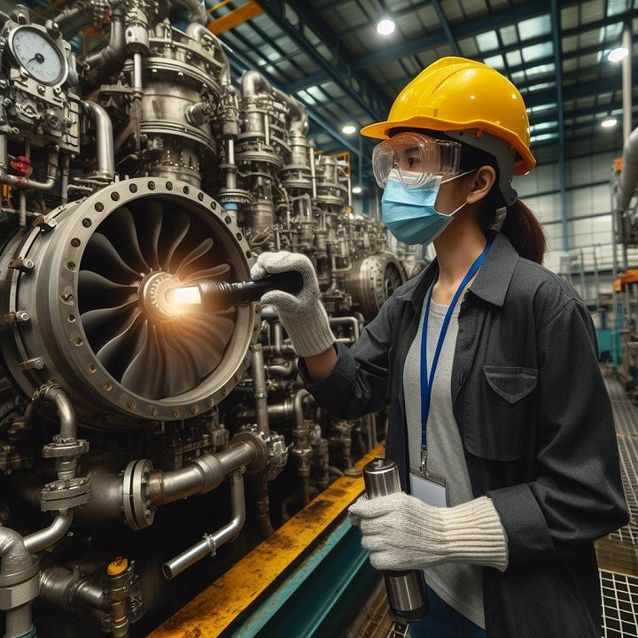Quality and ensuring it are always top priorities in continuous improvement. Quality and continuous improvement should always go hand in hand. Combining quality and continuous improvement is especially necessary when a company’s goal is to certify its implementation of the ISO 9001 management system. Achieving that combination requires that the company has a structure and processes in place to improve quality. However, a company just having processes in place does not necessarily mean that it proactively promotes quality or that quality improvement is at the core of its operations throughout the organisation. The customer wants the ordered product to be free of defects and to match, or exceed, the expectations and requirements it set for the product.
Professor William Edward Deming is lauded for his work on improving quality and not without reason. One of Deming’s best-known methods of continuous improvement is the Plan-Do-Check-Act (PDCA) cycle, which is widely used. The cycle calls for turning ideas that improve a process (or quality) into a plan, putting the plan into practice, monitoring the results and, finally, standardising the developed or improved method for use. When the results are not as desired, committed managers go back to the beginning of the cycle. The PDCA cycle is a precursor to the DMAIC (Define, Measure, Analyse, Improve, Control) process used in Six Sigma and to the twelve-step Kaizen methodology.
Various pieces of equipment and machines are at the heart of the manufacturing industry, and quality is highly dependent on their condition. Work on the Quality Maintenance pillar therefore depends on the progress on the Autonomous Maintenance pillar and on operators’ increasing skill in maintaining and operating their equipment.
The Quality Maintenance pillar, together with the Autonomous Maintenance and Planned Maintenance ones, serves to map the quality-critical settings and conditions of the equipment so comprehensively that, when controlled and maintained as planned, the equipment does not result in quality defects in the product. The ultimate goal is to develop a zero-defect state: trouble-free production conditions, a reliable process and standardised operations. Moreover, a zero-defect system should include robust control systems to locate any quality defects that arise as soon as possible.
In World Class Manufacturing, the six main steps of the Quality Maintenance pillar are:
- evaluate the starting point in terms of quality
- ensure the basic conditions required for quality
- eliminate quality losses
- establish zero-defect conditions
- improve zero-defect conditions
- manage and maintain the zero-defect system
With the help of experts familiar with the relevant processes, organisations implementing the Quality Maintenance pillar will carry out comprehensive root cause analyses for quality defects and will seek the most effective countermeasures for avoiding their recurrence. The aim should always be to achieve such rigorous countermeasures that at least the possibility of human error is eliminated.
Analysing the root causes of quality defects is a reactive activity, and the damage has already been done if a customer complaint prompts the analysis. It is important to create an internal complaint system where the next step or process is positioned as the customer of the previous one. This framing facilitates catching many quality defects and initiating root cause analyses before products reach customers. If a sufficient countermeasure can be instituted for the root cause found, then new quality defects with the same root cause should be impossible. Determining whether the real root cause has been found and whether the countermeasure is truly sufficient is incredibly challenging. In conducting root cause analyses, numerous failures are common:
jumping to conclusions (worst type of failure)
incomplete or incorrect initial information
insufficient information to derive a correct fault description
potential fault causes missing from the fault description
eliminating potential fault causes without reason or blaming causes without verifying their culpability
accepting something as a root cause without verifying the logical steps that lead from the cause to the fault
not finding or implementing proper countermeasures
Resources should be invested not only in reactive actions but also in proactive activities. Vilfredo Pareto’s 80/20-principle is correct when applied to proactive quality assurance. Having the basis of operations in order can prevent the 20% of causes that produce 80% of an organisation’s quality defects and process variations that affect quality. Standardisation, employee training, working conditions (5S) and quality control are indispensable during work. Organisations can tackle the other 20% of defects with advanced tools such as the DMAIC and the twelve-step Kaizen methodologies.
Proactive quality work requires continuous improvement, and planning should prioritise medium- and long-term operational strategies to ensure that the right activities are formulated and resources are allocated to the right places and at the right times. Aurelia Turbines has been leveraging World Class Manufacturing and developing processes to meet the requirements of the ISO 9001 standard and delivering highest quality.
Stay tuned. Our story continues next month.


